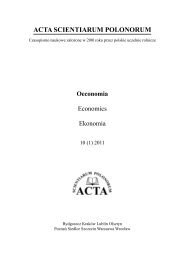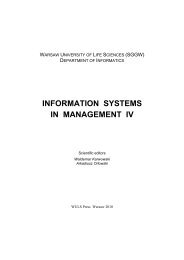Lubna landfill
Lubna landfill
Lubna landfill
- No tags were found...
Create successful ePaper yourself
Turn your PDF publications into a flip-book with our unique Google optimized e-Paper software.
4 Investigations of waste properties4.1. Scope of investigationsThe in situ tests for the <strong>Lubna</strong> <strong>landfill</strong> were performed bewteen 1996-2002. They were todetermine the mechanical parameters of wastes for stability analysis, settlement prediction andestimation of bearing capacity for the road foundation (Fig. 4). The following field investigationswere carried out:1. Waste morphology analysis.2. WST (weight sounding tests).3. Settlement and lateral movement measurements.4. Back-analysis for stability and displacement predictions.5. Permeability tests of wastes and subsoil layers.4.2. Waste morphology analysisWaste composition determination was performed by sorting, and shifting through a 10 mm strainerwith for separating the fine fraction. The measurements were made for wastes delivered fromWarsaw. The contents of each waste component are presented in Table 1. The moisture contentof municipal wastes was approximately 45 %.Table 1. Average composition of fresh municipal wastes stored on the <strong>Lubna</strong> <strong>landfill</strong>No Waste components% of average weightof municipal wastes1 Paper 222 Glass 123 Metals 64 Textiles 55 Plastics 96 Mineral matter > 10 mm 47 Animal origin wastes 38 Plant origin wastes 269 Organic origin matter > 10 mm 310 Fraction 0-10 mm 104.3. Sounding testsThe weight sounding tests (WST) were generally performed along the axis and in the vicinity ofroads on the <strong>landfill</strong>. The tests have been repeated each time when 5 m of waste had been laid.The sounding was continued until the sound tip reached obstacles (tyres, metals etc) or stoppedwhen 100 half-turns per 20 cm (N 20 >100) were achieved. The sounding results were used forquality control of the road foundation and waste layers compaction (see Radiowo Report). For the<strong>Lubna</strong> <strong>landfill</strong> (consisting of fresh and old wastes), slighty lower values of N 20 and thus of therelative density I D were reached in comparison to the Radiowo <strong>landfill</strong>. This results in thedifference of wastes morphology between the Radiowo and <strong>Lubna</strong> <strong>landfill</strong>s. Slimes and theapplication of thin layers of sand between layers of waste also influence the low density of wastes.7
















